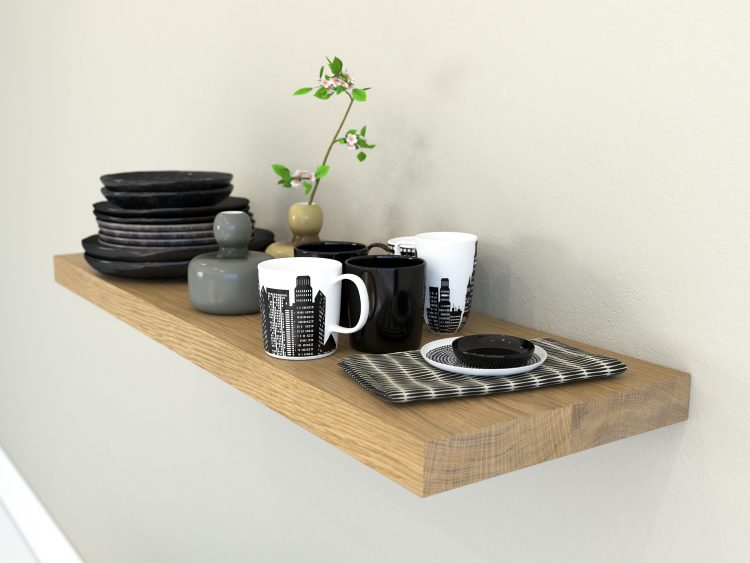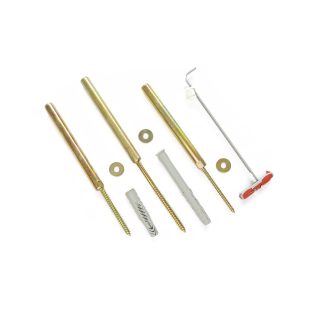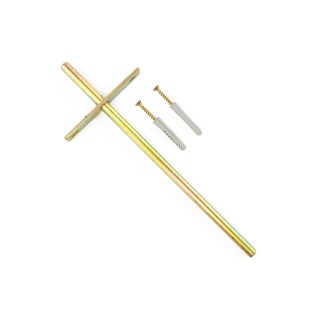
How much weight can floating shelves hold? More often than not the answer to this question actually lies with your wall and the floating shelf brackets you use, not the shelf. Please bear in mind that we are referring to solid wood floating shelves in this article and not the hollow, mass produced, cardboard core type shelves.
There are varying types of floating shelf brackets available on the market, each one will have a different weight rating but some don’t specify one at all. How much weight they can hold is usually affected by what type of wall they are designed to fit to and also potentially by the design of the bracket. For example, floating shelf brackets designed to fit to solid walls, like brick and concrete, will generally have a higher weight rating then a bracket designed to fit to plasterboard or drywall. Plasterboard is not designed to be a load bearing surface, therefore if you are installing a shelf that is solely fixed to plasterboard, the load rating will be significantly limited.
The depth of the shelf also plays a key role in how much weight a floating shelf can hold. As the depth (distance from the front of the shelf to the wall) increases, so does the leverage effect on the floating shelf bracket. This is why we specify not just a weight rating on our brackets but also a maximum recommended shelf depth. Taking all of these factors into account, we then recommend a minimum quantity of brackets that should be used per running metre of shelf.
Floating Shelf Bracket Weight Ratings
We have our own range of floating shelf brackets. We extensively test these so that we are able to offer definitive guidance on what will work for your scenario. Our range of brackets are suitable for use within the following weight ratings (please bear in mind both the weight of the shelf and its intended load, when calculating the overall weight the shelf brackets need to hold);

Multi Wall Floating Shelf Brackets
Solid Wall – 10kg per bracket
Plasterboard Wall – 6kg per bracket
If securing to the timber stud work rather than the plasterboard itself, use the solid wall bracket for a 10kg rating and a maximum shelf depth of 250mm.
Dot and Dab Wall – 8kg per bracket (this increases to 10kg per bracket if strengthened in the cavity with a chemical resin dab)

Heavy Duty Floating Shelf Brackets
Solid Wall / Timber Stud Work – 20kg per bracket (this increases to 40kg per bracket if fixed with a chemical resin)
These brackets can be cut down to work with shallower shelves, which does not affect the weight rating.
As you can see from the above, the weight floating shelves can hold varies significantly. This depends mostly on wall type, shelf size and of course, the brackets and quantity used. However, armed with all of the information above, you will be able to ensure your floating shelf is fitted with the right brackets to sufficiently hold your required weight.
We are often asked if extra brackets can be used over and above the recommended quantity per metre in order to increase the weight capacity. The answer is absolutely! This doesn’t cause any issues and it is always better to be over than under. However we do not recommend exceeding the maximum recommended shelf depth as this will rapidly overload the fixing. This, and an incorrectly identified wall type, are the most common causes of floating shelf bracket failure. For a helpful guide on identifying wall types, check out our post What Type of Wall Do I Have?.
We hope you found this guide helpful. If you have any questions regarding the information detailed in this guide, or have suggestions for future topics, please contact us. You can read our previous guides here.
